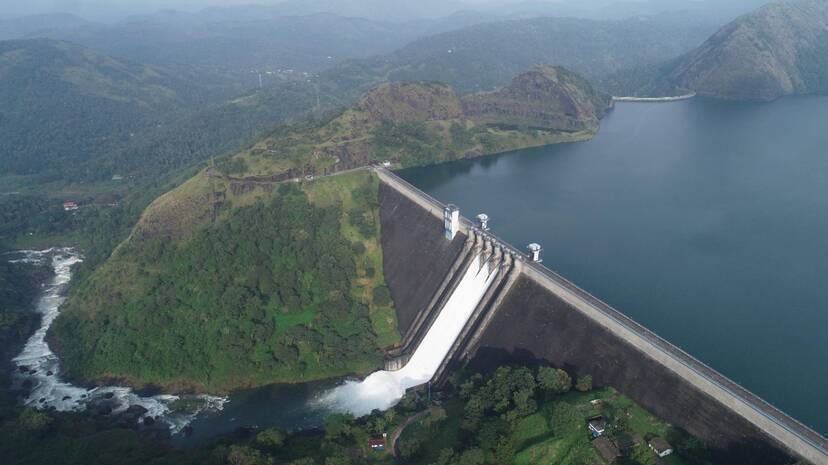The Mullaperiyar Dam: A Brief Overview
The Mullaperiyar Dam is a masonry gravity dam located in the Idukki district of Kerala, India. Here are some key points about this historic structure:
Location and Construction:
- The dam sits amidst the scenic Cardamom Hills of the Western Ghats, specifically in Thekkady.
- Construction began in 1887 and concluded in 1895 under the supervision of British engineer John Pennycuick.
- Its purpose was to divert water eastwards to the Madras Presidency (now Tamil Nadu).
Technical Details:
- Height: The dam stands at an impressive 53.66 meters (176 feet) from its foundation.
- Length: The main dam stretches 365.85 meters (1,200 feet).
- Spillways: There are 13 spillways, ensuring controlled water release.
- Reservoir Capacity: The total capacity is approximately 443 million cubic meters (15.65 thousand million cubic feet).
Controversy and Legal Tussles:
- The Mullaperiyar Dam has been a bone of contention between Kerala and Tamil Nadu due to its unique situation.
- Although it lies on Kerala soil, it is operated and maintained by Tamil Nadu under an old lease agreement.
- The 1886 Periyar Lease Agreement leased the land and water flowing into it to the Madras Presidency for 999 years.
- Post-independence, Kerala challenged the fairness of this agreement, but it remains a legal obstacle.
Safety Concerns:
- The dam’s age—now 126 years—has raised safety concerns.
- Kerala fears a potential dam burst, which could wreak havoc downstream.
- In 2014, the water level reached 142 feet for the first time in 35 years, intensifying these worries12.
The Mullaperiyar Dispute: A Historical Saga
The Mullaperiyar Dam isn’t just about engineering; it’s a saga of politics, rights, and regional tensions. Here’s a glimpse:
- Colonial Legacy: The dam’s genesis lies in the colonial era. The lease agreement signed in 1886 granted Tamil Nadu rights to the water for 999 years. Kerala inherited this arrangement post-independence.
- Legal Battles: Sir CP Ramaswamy Iyer once argued that Tamil Nadu had no right to use Mullaperiyar water for power generation. However, the 1970 agreement allowed Tamil Nadu to generate electricity from the dam, leaving Kerala with no benefits despite hosting the dam3.
- High Water Levels: The recent rise in water levels reignited the debate. Kerala emphasizes safety, while Tamil Nadu focuses on water supply and irrigation4.
In summary, the Mullaperiyar Dam stands as a testament to engineering prowess, historical complexities, and the delicate balance between states. Its triangular silhouette against the lush green hills continues to captivate both tourists and policymakers alike.
Learn more:
Tags:
Knowledge Development

